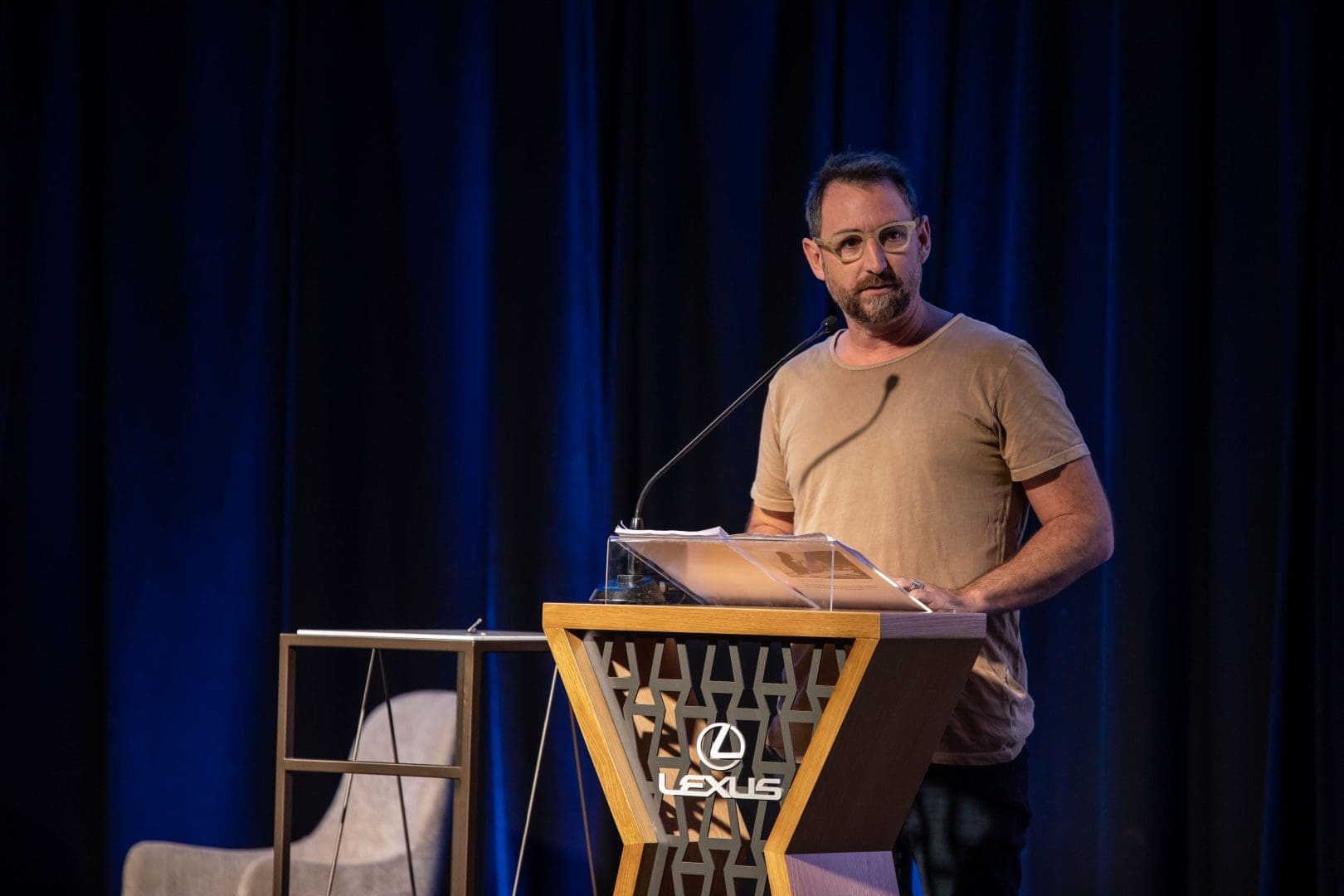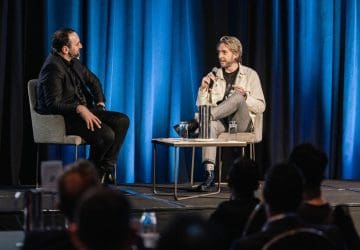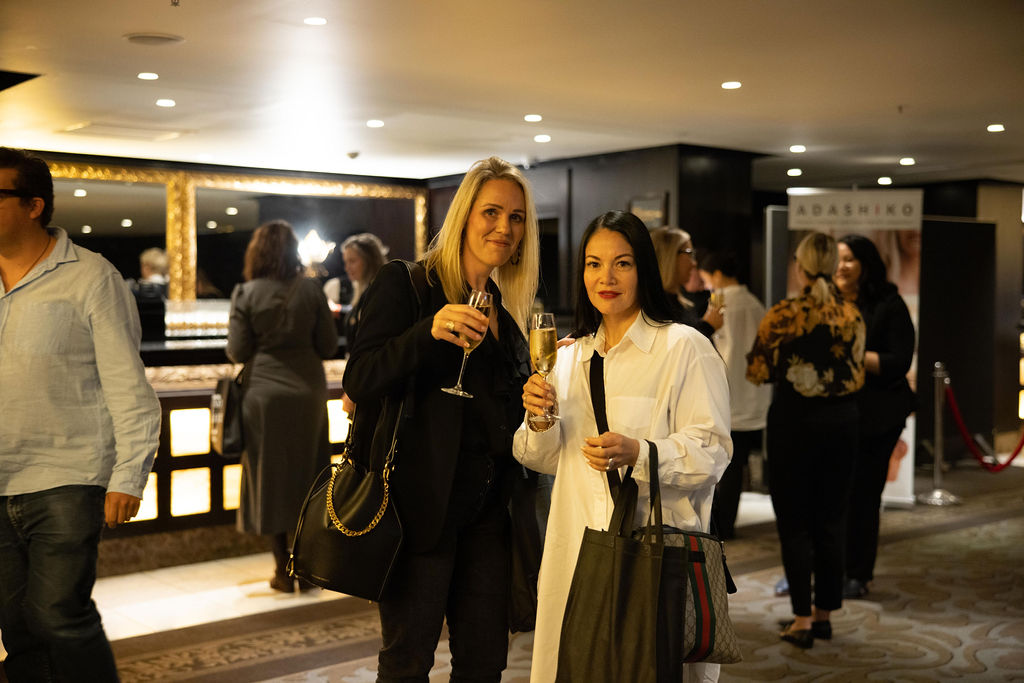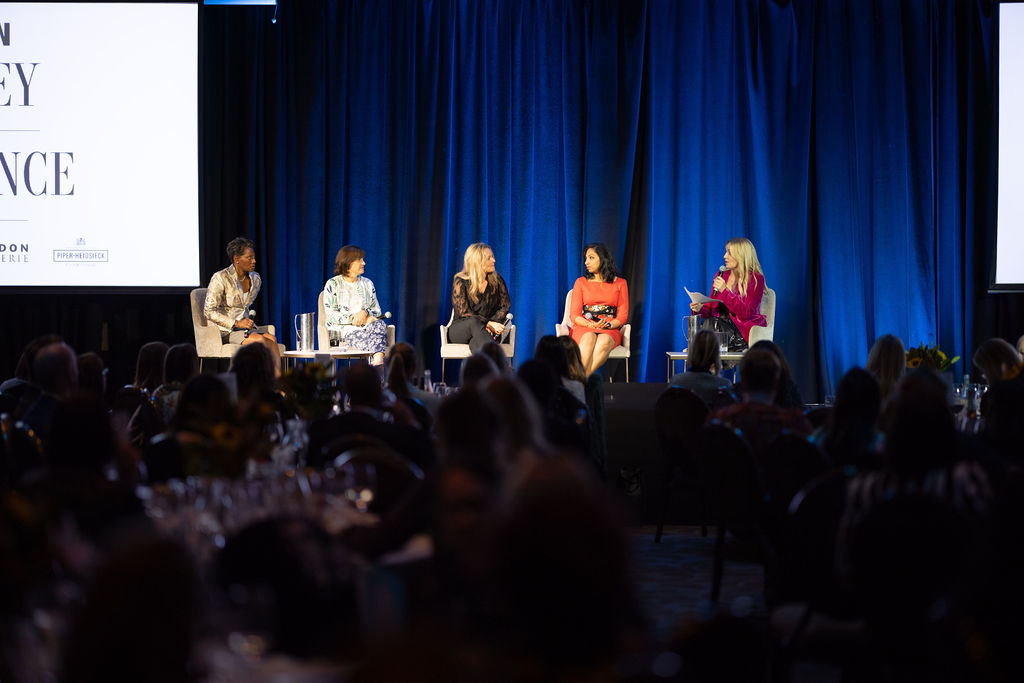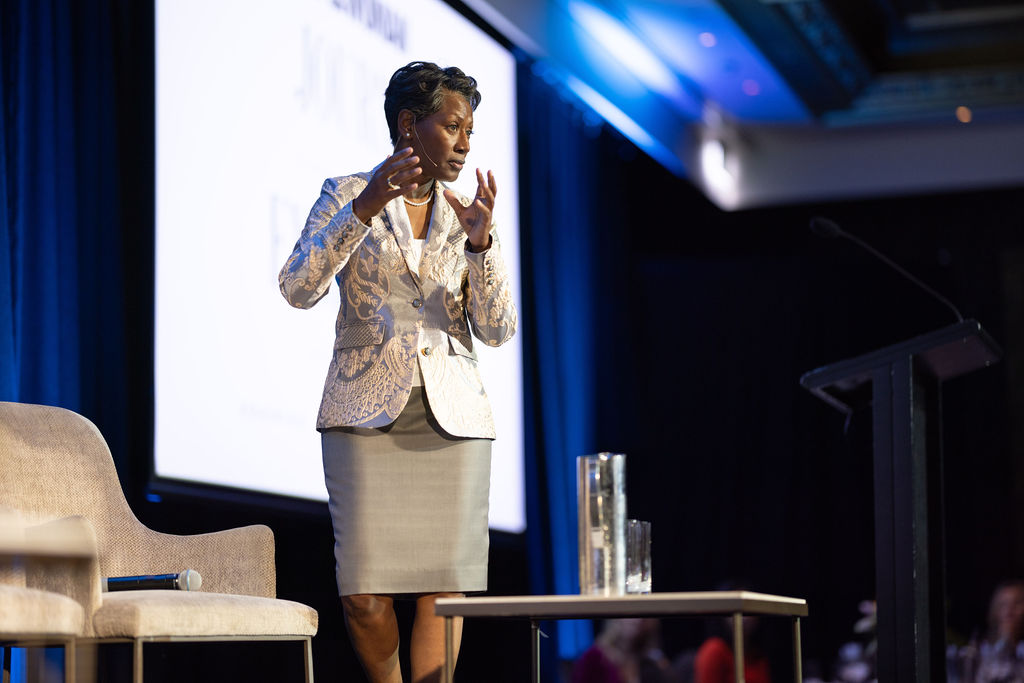The Importance Of Storytelling
The following is the transcript of a talk by James Hurman at the M2 Summit, 20 November 2019.
James is the founder and CEO of Storytech, a ‘brand strategy in a box’ digital platform for startups and small businesses. He is also the founder of Toothcrush, a subscription service shipping eco-friendly bamboo toothbrushes to subscribers across the world. James has also authored 2 books.
For more information on our Summits, visit M2now.com/summit/
I spent most of my working life in the advertising industry, before leaving that industry about five and a half years ago to start a company called Previously Unavailable. Previously Unavailable is an innovation and venture studio that specialises in creating new products, new businesses, new platforms and new brands for a range of companies. We create our own ventures and we also work with large, mostly multinational organisations.
At Previously, we led the development of the Stolen Rum brand and one of the assignments involved with that was creating a product for the US market. We created this product called Coffee and Cigarettes. It’s the world’s first smoked rum, which proved such a cult success in the US that it led to the majority stake acquisition of Stolen Rum for $21 million in 2015.
A little bit more recently, we developed the brand and the digital product experience for Simplicity KiwiSaver. Simplicity are now the fastest growing and best performing KiwiSaver fund with about $1.3 billion in funds under management after just three years.
Around the same time we created our first wholly-owned and developed startup venture, Toothcrush, which is a bamboo toothbrush subscription service which we started about three years ago. It quickly grew into Australasia’s number one toothbrush subscription and now about 20,000 people across Australia and New Zealand use our brushes every day. Just last month we completed the successful exit of that business. That’s the first time that we’ve created an innovative company and sold it, which is a pretty exciting time for us.

One thing that all of those projects had in common was a great story. They’re all good products, but they live within a context of a story that’s a lot bigger than the products. In Stolen’s case, that story was about celebrating the history of rum, which is a spirit that has always been on the wrong side of the law.
Stolen was all about capturing that spirit and modernising it and making it contemporary in a way that people would really bond with; the exciting history of the spirit. Coffee and Cigarettes was very much another articulation of Stolen advocating for doing things that you probably shouldn’t.
In Simplicity’s case, it’s a story about the dignity that you can return to people in their retirement, if you take away the exorbitant fees that banks and and other money companies charge you to manage your KiwiSaver in an active way, which is no more beneficial to you over the long term than having it managed in a passive way.
In Toothcrush’s case, it’s a story that we’re all very much part of, which is a future with less plastic in it, or at least plastic being used in more innovative ways.
I’m going to talk about the power and the value of stories when it comes to business and entrepreneurship and innovation. I want to start with a story from the advertising industry. If you stay in the advertising industry for long enough, you are bound to eventually hear a story about a company who made tinned white salmon. The difference, of course, with this company was that their salmon wasn’t pink, it was white. You might be aware that most salmon is pink, but for certain species of salmon, the flesh is white. Other than the colour, it’s just the same.
It’s the same shape and structure. It smells the same. It tastes the same. It has the same nutritional profile. The only difference is that it’s not pink. But because we’re so conditioned to believe that salmon should be pink, people were not buying the white salmon and they weren’t buying it in such volumes that this company was in danger of its entire stock going bad before it had the chance to be bought and consumed.
The company was in a state of crisis about their lack of sales and presumably in a state of moral outrage because people were discriminating on the basis of flesh colour. They employed an advertising agency and they said to the agency, ‘Make us a campaign that will make people want to buy our white salmon.’
So the agency took the brief back and they got to work. And you know what? They cracked it. They came up with a campaign that was so effective that the entire stock of tinned white salmon sold out in a matter of weeks. They did this by making a very simple promise to consumers that their white salmon was guaranteed not to turn pink in the can.
Now this is an example of what we’ve come to describe as the power of storytelling in business. It’s this idea that we can take a product and without doing anything to the product, we can wrap it in a story that contextualises it in a way that makes people want it. Even better if we tell a story that engages people’s emotions. We can get people to want things, not for rational reasons, but for irrational reasons.
For example, an egg whisk that was bought on eBay in 2009 for 25 cents. It was put back on eBay, accompanied with a fictional story featuring this egg whisk written by a Norwegian author. Then when it sold, it’s sold not for 25 cents again, but for $30 – 120 times what it was bought for.
Now, this egg whisk thing was part of a seminal study called Significant Objects in which two researchers purchased cheap trinkets and then asked writers to invent stories featuring those cheap trinkets. The stories and the objects were then put back onto eBay to see whether the invented story enhanced the value of the object. Those trinkets in total were purchased for $128.74. They were then sold with their stories for a total of $3,612.51 cents, which is a 2,700 percent markup.
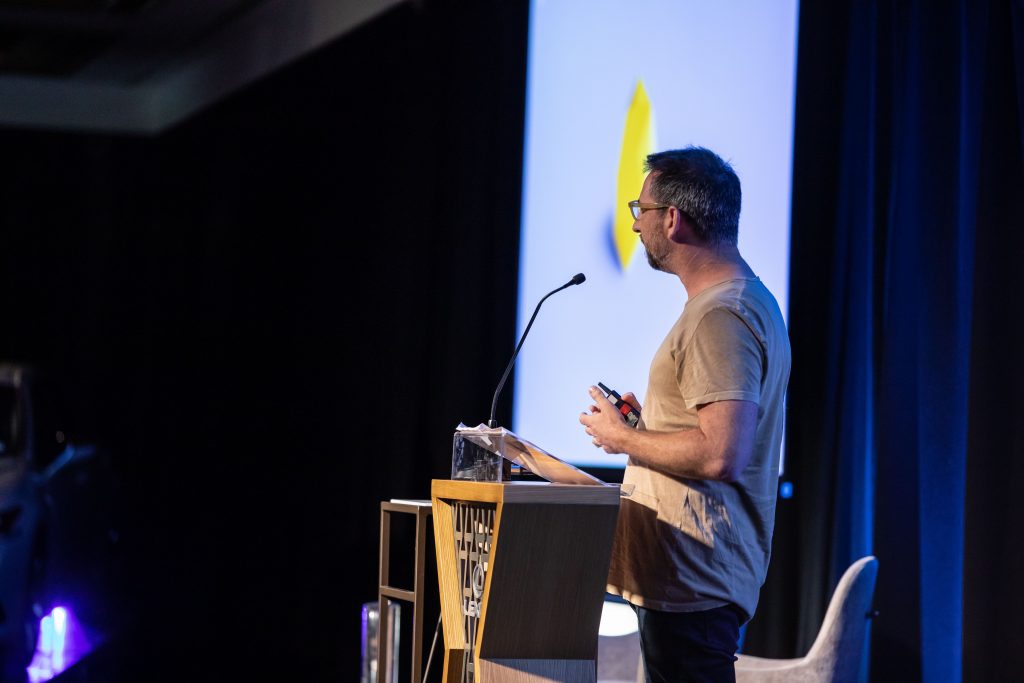
As a reviewer observed, it tells us that stories add value. Even when we know the story is made up, it still adds value. In 2013, some researchers in Helsinki did an experiment. They wanted to find out whether this idea of stories adding value could make sense, not in a kind of fictional eBay world, but in a real business context. So they asked people how much they would pay for a particular cosmetic product that they’d never heard about before and they split the participants into two groups.
One group was told all about the product. They got told what was in it and what it did. The second group, they were told that same information about the product, but they were also told about the company behind the product, why that company existed, why they created this product, what they hope this product would achieve in the life of its customers. In other words, they learned about the product, but they also heard the story.
Then everyone was asked what they expected the product to cost. The first group said they expected the product to cost 18 euros. The second group, the one that had heard the story, said they expected the product to cost 29 euros. That group assumed the product was worth 60% more than the group who had just heard the product information.
Then everyone was told that the price of the product was actually 31 euros and they were asked whether at that price, which was greater than what either of them had estimated, would they buy this product?
In the first group, 50 percent of them said yes, we’d buy the product at that price and 50 percent of them said no they wouldn’t. In the second group, the group that had heard the story, 100 percent said that they would buy the product for 31 euros. This is research that’s now been repeated in a number of different ways.
The same kind of research has shown that adding a story about the artist to a painting’s information increases its value. The same kind of research shows that adding a story about a visitor to hotel information increases the value of that hotel room and the price that people are willing to pay.
Stories create value and storytelling has been shown in all kinds of ways to add value to products and brands to make people want them more and to make people view them as worth paying more money for.
It’s no wonder that we’re hearing more and more about how important storytelling is to building brands and building businesses. I want to talk today about a really easy way that any business can start telling a story about their brand in a way that that adds this kind of value.
To give you an idea about how to develop this kind of story, I want to talk about the most popular story of all and just about every fable or legend or novel or movie that’s ever captured the imaginations of millions of people is the same kind of story.
I’m talking about the three act structure story and you probably know what that is and if you don’t, it’s going to sound very familiar. Three act structure stories are split into three parts. In the first part, someone’s going about a normal day in an ordinary world. When suddenly something happens that shadows all of that ordinariness and normality and thrust them off on a new journey to address the thing that’s happened. Solving the mystery or defeating the bad guy, or capturing the heart of the love interest.
In act two, we follow the characters as they confront the challenge and they go through all sorts of adventures and plot twists on their way to act three, where everything comes to a climax and they emerge victorious. The world is put to rights and we all live happily ever after. We love that story. Just about every single one of the world’s most beloved books and movies and TV shows are versions of that same story.
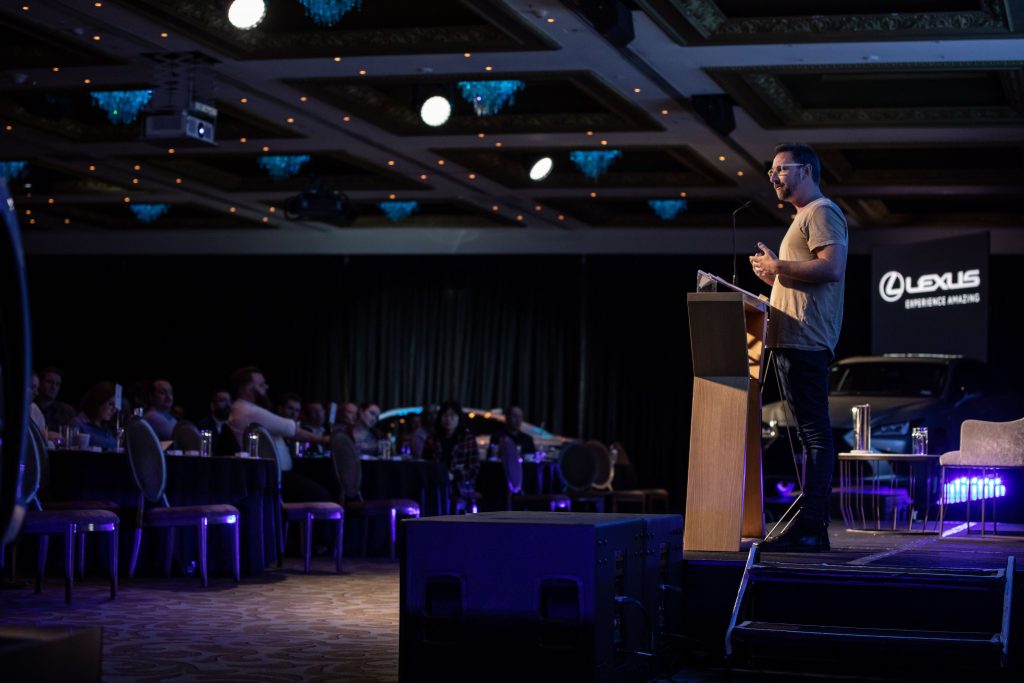
It engages our emotions and our brain chemistry in a perfect way that never gets old. And you know what? We can use that same simple story structure to capture the power of storytelling, to achieve transformative things in business. To give you an example, I’m going to use a story from 2004 in a big ad agency in London. There was a strategic planner by the name of Olivia Johnson who was working on the Dove brand. At the time, Dove had recently commissioned a study to better understand women’s relationship with beauty.
What that study found was that women had an increasingly difficult relationship with the type of beauty that had been normalised in decades of advertising in the media. The study showed that women felt subject to an unrealistic standard of beauty that few could ever achieve. The study showed that just 9 percent of women considered themselves attractive.
Olivia was so affected by this research that she came up with this idea for the Dove brand that involved them rallying against these ideals of beauty and instead championing a new kinder, more real definition of beauty. Now the strategy was brilliant, but Olivia had a problem. Most of the senior managers of the Dove business were men who had built up their business and their brand the way that everyone else in their world had, by using airbrushed images of perfect skinny women.
So you can imagine Olivia going to them and saying, ‘stop doing that.’ And not only that, but use your entire budget to rally against the very thing that’s made you successful in the first place. The reality was that her strategy, no matter how big-hearted or well thought through, was very unlikely to be accepted by the Dove business.
So Olivia did something extraordinary. She found that many of those men in charge of Dove had daughters. She secretly contacted the daughters and she talked to them on camera about how imperfect and unbeautiful those images of women in the media made them feel. Then in the presentation of her strategy, she played those tapes to their fathers.
She talked to them about a world where girls and women did not feel that way. A future where the definition of beauty had changed to become something that all women could relate to and aspire to a future where 100 percent of women considered themselves attractive. She talks to them about the way that Dove could bring about that future with a campaign for real beauty.
She told those Dove managers a three act story and the first actually cast their own daughters as the characters in a world that was crushing their self esteem. The second act showed Dove teaming up with those characters to confront that challenge with the campaign for real beauty. And in the third act, she showed a future where the problem had been solved. The world had been put to rights and their daughters and their granddaughters could live happily ever after.
By doing what she did, she made her strategy impossible for those men to say no to. Whereas without that story, it would have been just about impossible for them to say yes. This is the power of storytelling. And it’s why people like Richard Branson advocate for the power and the necessity of being a great storyteller. That that same three act structure can be used to tell the story of any company.
To give you an example, I’ll use a company that was founded in 2008 by two friends and in under three years had reached $1 billion valuation and total domination of its category. That company is Airbnb. There still are, and there had been a long time before Airbnb came along, plenty of websites where you could browse and book accommodation.
But somehow Airbnb captured the hearts and the imaginations of people in a way that blasted them above and beyond everyone else. Because not only did they have a great product, but they also had a fantastic story about how and why that product was created in the first place and the better future that they believe that product could help bring about.
They had three acts. In the first act, roommates Brian Chesky and Joe Gebbia couldn’t make rent. Out of desperation, they came up with this idea to get an air mattress and put it on the floor of the apartment living room and turn it into a bed and breakfast to make a few bucks. When a big design conference came to town, they got others to do the same.
What they found was that people had a much more rich, fulfilling experience staying on these air mattresses on people’s floors, than they did when they stayed in hotels. They had this flash of insight, what if they could make travel more human? And so in act two, they created their website, AirBed & Breakfast and their product connected guests and hosts all over the world and gave hosts a way to give their guests an experience that was more like being a local and less like being a tourist.
In act three, they envisage the future where people could easily find community even in the most foreign of places. Where people around the world felt like they could belong anywhere. Now, just like in any three act story, act one is where something happens that disrupts the life of the founders and sits them off on a new journey. Act two is the creation of a product or a service that’s different or better. And in act three, the widespread adoption of that product or service has caused a change for the better. The world has been put to rights and we can all live happily ever after.
The great thing is that any business, no matter how small or how young, can have this same kind of story. Act one is your history, how you started and why you started. Act two is your product and why it’s different or better. And act three is your ambition for the change that you want that to create in the world.
Now, this kind of story is powerful from an advertising and marketing perspective, but it’s also powerful in all of the other ways that are important for a business. It’s just as powerful when you’re trying to hire new employees. It’s just as powerful when you’re pitching to investors. It’s just as powerful when you’re talking to the media. It’s just as powerful when you’re talking to potential customers. In all of these situations, a company that has just a great product will be beaten by a company that has a great product and a great story and you can apply the same structure to any company.
In 2003, after General Motors recalled and destroyed all of its EV1 electric cars, Martin Eberhard and Marc Tarpenning felt the world needed a company that was 100 percent committed to electric cars. They founded Tesla and Elon Musk became the CEO of the company creating desirable electric cars, and they’re working towards a world that’s transitioning out of fossil fuels and into electric vehicles. They have three acts, a history, a product and an ambition.

In 2008 on New Year’s Eve, Garrett Camp and his friends spent $800 hiring a private driver. They thought that was a bit expensive and wondered whether, through sharing transport, they could make transport more affordable. They created UberCab in 2009 to enable people to share rides. Uber’s ambition is to create a world where transportation is as reliable as running water everywhere for everyone. They have three acts; a history, a product and ambition.
Whenever I show this to business owners, they usually start at this point thinking about what their three acts are. That’s the beauty of it, every business has this kind of story. Every business has a history, has a product and hopefully it has some kind of ambition. But usually they’re only telling people act two. Act two is our product and why it’s better. We are great at act two. Everybody is doing act two; telling people about their product and why it’s better.
But I want you to imagine, if you showed someone only act two of a movie, if they’d be able to understand what was going on. All of their empathy for those characters and where they came from and all of that emotional payoff for learning about the ending, those things would be non-existent. People would understand, but they wouldn’t care. And that’s what great stories do. They make people care. I’m not saying that having a better product and telling people about it isn’t important, it’s critically important.
But the thing is that as business owners, as marketers, our job isn’t just to get people to comprehend us. Our job is to get people to care. And that’s what storytelling is good for. If you can get people not only to understand your product, but also to empathise with why you created it and to become inspired by the positive change that it can create in the world, that’s when people start to care. When you give them a story that’s got a beginning, a middle and an end.
I want to finish by telling you the story of my new startup Storytech, which has been created to help startups and smaller businesses find and tell their own stories and to dig a little bit deeper past act two. For the first two or three years of my company, we were approached by lots of startups who said, ‘Can you help us with our brand? We need to create a strategy for the brand.’
The problem is that the way that we do that in the consultancy and agency world is just vastly too expensive for most tiny companies that are right at the start of their journey. I just couldn’t conscionably charge those sorts of companies, that amount of money to do something at that life stage. For a while we wrestled with this conundrum of how do we help young brands and businesses with their brand in a way that’s affordable for them and affordable for us.
Then one Saturday morning, I had that epiphany moment where I kind of thought, ‘Well, surely we could we could condense and simplify our process into a day workshop format. Rather than showing up to run that workshop, perhaps we could use prerecorded video and an online digital platform to run that day so a client could use digital to do it themselves. We created a brand strategy in a box digital product which allows any company to create a world class brand story in a day for $500, rather than for many thousands.
Teams gather at their place on a day of their choice and spend the day completing the three Storytech canvases. Videos of myself introduce them to and guide them through each section. They complete workshop exercises, guided by tips, case study examples and workshop materials. Then they enter their content into the StoryTech platform, populating their canvases as they go.
This content is then brought together in a fill-in-the-blanks narrative structure, creating a concise story that captures the brand’s purpose, value proposition, ambition and history. Then, teams work up a to-do list, ways to tell this story and ensure it’s being heard by customers. At the end of the day, teams have three completed canvases that capture their story and their strategy to get out and tell it.
In my experience, most startups are much better at creating a world changing product, than they are convincing the world to let them change it. I can see a world where that’s no longer the case and where every company, no matter how small or how young they are, has access to the type of storytelling that can really help them succeed.
Q&A with Dominic Bowden
In terms of things like greenwashing, we all know those companies that it feels like they’ve just attached themselves to a movement. What would be the advice you would give to people that are about to make that decision?
The wonderful thing is that people can smell bulls**t. With StoryTech and the work that we do, we don’t make up a story for a brand. It’s not about that at all. What we do is we reveal the story that is truly there. As business owners, most of us can’t see the wood from the trees because we’re in the busy-ness of the business to much to do this.
The work is more about how do we have all the information that’s floating around in the businesses brain? How do we clear away the bits that aren’t the story and reveal the story that’s there? That’s a very authentic process, which isn’t about making up stuff.
On the other side of the fence, there are companies who have entire departments who are employed to make things up on their behalf and that’s the wrong way of doing it. They will be found out and people can smell bulls**t. If you don’t have an authentic story to tell, start doing things as a company that give you an authentic story to tell.
For those who either own their own business or are working on an idea for a business, what would be the one question that you would say to these guys to ask themselves?
It’s probably the ambition question. As New Zealanders, we’re pretty good at articulating where we’ve come from and what we’re about. We’re pretty good at talking about what we’re doing.
It’s that ambition piece that as New Zealanders we tend to feel goes against the grain of the humility that we’re supposed to culturally have in New Zealand. We don’t think as much about what is the positive change that my business or my product will create in the world if it becomes ubiquitously used.
My advice would be to start thinking about that early. Start formulating what that vision is because you can inspire others with that vision. You can get them to be involved in your company in an emotional way, rather than just a rational way, which is much, much more powerful in the short and the long term.
Interested in attending our next M2 Summit? See more information here

